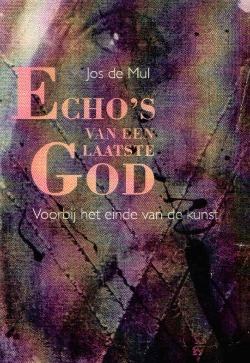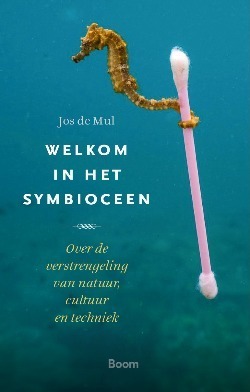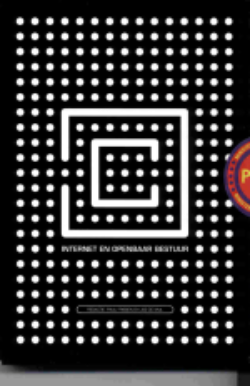Jos de Mul. Echo's van een laatste God. Voorbij het einde van de kunst (in voorbereiding).
 Hoe staat het eigenlijk met de sneuvelbereidheid van de hedendaagse kunstenaar?
Hoe staat het eigenlijk met de sneuvelbereidheid van de hedendaagse kunstenaar?
In dit boek worden 'het einde van de kunst' en 'de dood van God' - twee thema's die de filosofie van de afgelopen eeuw voortdurend hebben bespookt - in hun onderlinge samenhang doordacht. Deze vraag heeft met de komst van de islam in het seculiere Europa een nieuwe actualiteit gekregen.
De Mul analyseert daartoe op diepgaande wijze de teksten die Hegel, Nietzsche, Freud en Heidegger aan deze beide thema's hebben gewijd en verheldert zijn betoog in een reeks verrassende interpretaties van kunstwerken van uiteenlopende signatuur. Zo komen onder meer de Metamorfosen van Ovidius, gedichten van Kouwenaar, schilderijen, foto's, sculpturen en video-installaties van Man Ray, Newman, Scholte en Viola, muzikale composities van Carter en een film van Godard ter sprake.
De Mul betoogt dat Hegels bespiegelingen over het einde van de kunst niet zozeer een nostalgische terugblik op de grootsheid van de klassieke kunst behelzen, maar vooruitwijzen naar de vele gestalten van de moderne kunst, zoals die van de niet-meer-schone, de niet-meer-figuratieve, de niet-meer-expressieve en de niet-meer-menselijke kunst. Aanknopend bij Nietzsches these dat het nog eeuwen zal duren voordat de mens zich de betekenis van de dood van God zal realiseren, argumenteert De Mul dat de kunst in de twintigste eeuw bij uitstek het medium is geweest waarin de schaduwen en echo's van de gedode God levend zijn gebleven. Het werk van bovengenoemde kunstenaars wordt uitgelegd als een reeks pogingen om voorbij het 'einde van de kunst' nieuwe, immanente vormen van transcendentie en spiritualiteit te bewerkstelligen.








